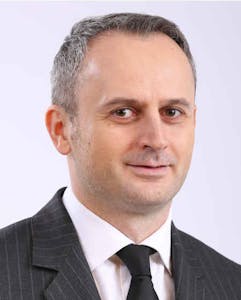
Broadcasting rights of major sports competitions is an important source of revenue for their organisers, with media rights being sold for millions of dollars. Sportsmen and sportswomen are not only paid to perform their art, but also to let the public enjoy it from a distance and across different types of media.
Competitions organised by Uefa are some of the most watched in the world. The governing body monetises these opportunities by producing footage of the events and selling media coverage, alongside other income streams. Uefa owns the media rights to its events based on what the participating regulation football associations adhere to; in their turn, football associations acquire permission to use the images of their players through employment or other contractual arrangements.
However, the extent to which an athlete’s image may be exploited is not always clear-cut. Sometimes, boundaries with other rights, such as the athlete’s right to privacy, can become blurred, especially when the athlete is performing in a competition.
One example of a borderline situation was the recent incident involving the Danish football player Christian Eriksen, who was filmed for an extensive duration while suffering a cardiac arrest during his team’s match against Finland at this year’s Euro 2020 tournament. The cameras lingered on the suffering footballer, showing not only his suffering, but also that of his distressed partner.
At European level, there is no uniform law to harmonise the rules on broadcasting persons in distress. Still, some countries have adopted specific rules. One example is the Ofcom Broadcasting Code in the UK, where broadcasters are discouraged from taking footage or audio of “people caught up in emergencies, victims of accidents or those suffering a personal tragedy, even in a public place”, unless it is warranted. Such regulation is the reason why the BBC apologised for not cutting the live transmission of the distressing images sooner.
In France, Law no. 86-1067 dated September 30, 1986, provides that, while communication to the public by electronic means is free, the exercise of this freedom may be restricted to the extent required in respect of the dignity of the person.
In Spain, the Constitutional Court decided, based on a law originating in 1982 protecting the right to honour and private life, that selling video images depicting a mortally wounded torero in the infirmary outside a bull-fighting arena by a private company infringed the deceased’s and his family’s right to privacy: “In no case can incidences on the health and life of the bullfighter be considered public and part of the show, derived from the injuries received, once he leaves the bullring, since this would certainly mean turning something so personal such as the sufferings and the death of an individual, in clear contradiction with the principle of dignity of the person enshrined in art. 10 of the EC. And this is precisely the case in the present case, since the videotape reflects what happened when (torero) Mr. Rivera was taken out of the ring (and therefore, from public view), seriously injured and in a state of evident alteration, despite the demonstrated firmness of character*”.
Moreover, European states are signatories of the European Convention on Human Rights, where article 8 enshrines the right to private life and article 10 the right to freedom of expression. According to the jurisprudence of the European Court of Human Rights, sporting issues are matters of public interest, and at least some well-known athletes may be deemed public figures, for whom the expectations of privacy are usually lower than for normal persons. However, such expectations do exist even in public spaces. When a press publication imposes on the privacy of an individual with the aim of simply satisfying public curiosity, it does not contribute to a public debate and is not, therefore, of public interest.
The unfortunate incident at the Euro 2020 Denmark-Finland game represents an instance where competing interests, namely the right of the press to report noteworthy events, and the right of an individual to privacy, clash. In this author’s view, the right to privacy should prevail. It is true that Eriksen was on the field in a professional capacity, where he had consented to be filmed and have his image broadcast all over the world. However, the sudden health condition was beyond the scope of the game, and it is reasonable to presume that no prior consent had been given by the player to have his image broadcast while struggling for his life.
While it is undisputed that images of footballers playing are part of the entertainment the public is entitled to receive, the moment when a player becomes unavailable due to illness is both a public event and a private one. Showing the public the cause of the player becoming unavailable may be informative. However, focusing too intently on the agony and suffering of a certain player may be deemed to exceed the sphere of public interest. Moreover, focusing on a person connected to the player, but not a public person herself, can be deemed an even greater interference with that person’s private life.
*Translation from Spanish.